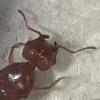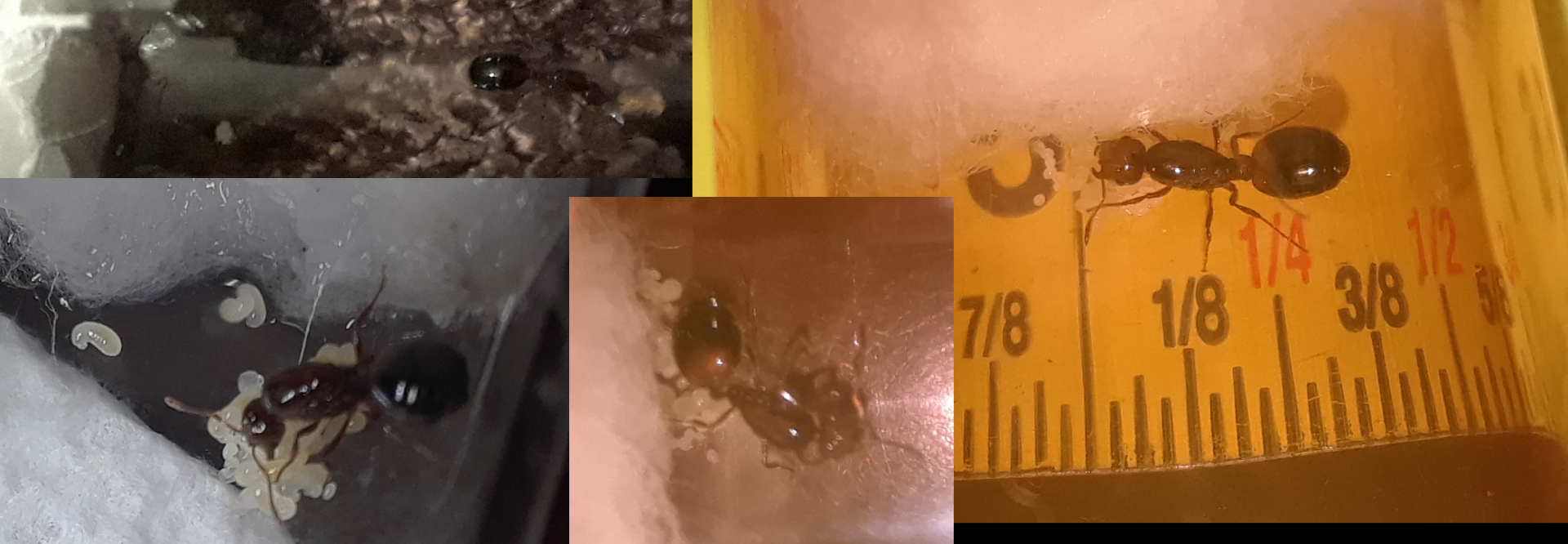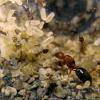Some wild caught ants with an already established colony. Saved them from the bug spray. I had a few guesses like Argentine ants, Pharaoh ants, and Crazy Ants but I am now thinking they might be Brown House Ant / Pheidole capensis? If the video isn't clear enough I could try with pictures the next time I feed them a mealy worm, even the majors come out for that.
Body:
1. Location (on a map): Central Florida
2. Date of collection: Collected sometime in April, they had alates in the nest.
3. Habitat of collection: Between pieces of old plywood. Near a lake if that matters.
4. Length: Didn't think of recording this. Don't want to disturb them and too few workers I don't want to mess with them right now.
5. Coloration, hue, pattern and texture: Brownish? Yellowish in bright light?
6. Distinguishing characteristics: I'm not well versed in this yet.
7. Distinguishing behavior: They have majors with large jaws that stay in the nest unless the nest is disturbed (they come out acting like guards) or when big food needs chopping up. Too small for their bites to hurt and didn't sting from what I have been able to tell.
8. Nest description: Between pieces of old plywood, made themselves little paths throughout it.
9. Nuptial flight time and date: None, but they did try mating with each other when I shined light to get them to move from a temp location to a set up.
10 . Post the clearest pictures: Here's a video I recorded while moving them from a tub and "test tube" to a proper formicarium setup. Hopefully that's clearer than any description I can currently formulate. https://www.youtube....h?v=XpsrBuVBwD4
The next few I am pretty sure are Fire Ant queens and most likely the invasive one, Solenopsis invicta. Though we do have some Native fire ants here so just in case I want to ID them.
Body:
1. Location (on a map): Central Florida
2. Date of collection: Collected sometime between March and April.
3. Habitat of collection: Sidewalks, streets, back yard.
4. Length: In picture provided 3/8 looks like?
5. Coloration, hue, pattern and texture: Reddish
6. Distinguishing characteristics: I'm not well versed in this yet.
7. Distinguishing behavior: Pretty sure they are a poly species. Some were found huddled and insisted staying together and cleaning and caring for each other. Hoping the few I allowed to stay together stay tame.
8. Nest description: N/A
9. Nuptial flight time and date: Between March and April.
10 . Post the clearest pictures: Attached file. Tried to get them as clear as I could.


















